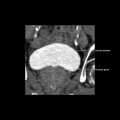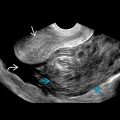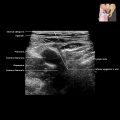KEY FACTS
Imaging
- •
Variable sonographic appearance of acute splenic infarction
- ○
Classic
- –
Hypoechoic, peripheral, wedge-shaped, and avascular
- –
- ○
Nonclassic
- –
Rounded or peripheral band morphology
- –
Global infarction
- –
Isoechoic to hyperechoic
- –
- ○
Bright band sign
- –
Parallel, thin specular reflectors perpendicular to US beam within hypoechoic parenchymal lesions
- –
Thought to represent preserved fibrous trabeculae within infarcted tissue
- –
- ○
- •
Chronic infarction
- ○
Atrophic, scarred spleen ± calcification
- ○
- •
Associated findings
- ○
Splenomegaly, splenic vein occlusion (with large perisplenic varices), splenic artery thrombosis
- ○
Top Differential Diagnoses
- •
Splenic laceration
- •
Splenic hematoma
- •
Splenic cyst
- •
Splenic mass
- •
Splenic metastases
- •
Splenic lymphoma
Diagnostic Checklist
- •
Color and power Doppler are critical components of US evaluation of splenic infarct
- •
Grayscale appearance can be variable depending on morphology, evolution of infarct
- •
Clinical history is very helpful
- ○
Multitude of underlying disorders can predispose to splenic infarction
- ○
Scanning Tips
- •
Use of slow-flow settings in color or power Doppler helpful to confirm avascular or hypovascular nature of infarct
- •
Visualization of blood flow in splenic hilar branches does not exclude splenic vein thrombosis










